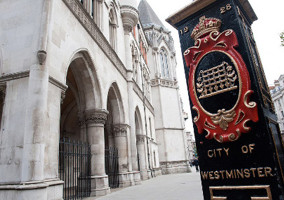We often hear that too much money is concentrated in the hands of just a few charities – that big charities dominate our sector far too much. Yesterday was #GivingTuesday, when one statistic was repeated many times: 97 per cent of charities get only 20 per cent of the money.
This isn’t entirely true. That only refers to registered charities, and there are 200,000 other small charities not on any register. So it’s actually 99 per cent of charities which get only 20 per cent of the money.
But it’s also not a bad thing.
The truth is that our sector gives far more power to small organisations than do most other parts of the economy. The big boys are less dominant, not more.
That’s not to say that there’s not a powerful case for better funding for small charities, or that some small charities aren’t struggling. Just that this particular number doesn’t tell a bad story, but a good one.
Because that statistic is just another way of saying that there are lots of small charities. That’s a good thing. If we shut down lots of small charities, the stat above would look better, but the world would be worse.
We can’t simultaneously argue that small charities are good, and that they need more money. By definition, giving them more money would take some of their "smallness" away.
The key issue is surely not what size a charity is, but whether it’s the right size to deliver benefit. And the answer is that for many the answer is yes, and for some the answer is no.
This is partly down to a key division in the sector. Most charities (probably 90 per cent) are community infrastructure organisations, and tend to have no or few staff or volunteers except trustees. There are often no beneficiaries, as such. They’re forums of common interest, and are more common in wealthy areas.
The other 10 per cent are organisations which exist to reduce unfairness, inequality and disadvantage. They tend to have staff and volunteers doing things for beneficiaries. A lot of them aren’t small by choice. They’d desperately love to do more. A lot of them are struggling with funding, particularly because of local authority cuts, and badly need more support.
We need to think about these two models completely differently. Ideally we'd like to grow more community charities in deprived areas. We also need to fight strongly to find new sources of funding for charities tackling disadvantage, and persuade local authorities to change their approach.
But crucially, neither of those two changes would have much effect on ameliorating the 99/20 stat we started with. It is the validity of that statistic, not the troubled nature of the funding environment, which is under question.
Why are there so many small charities?
We're used to comparing big businesses with small businesses, and there’s a minimum size a small business can be. Usually it has to generate enough income and profit for one person to live off, or it will have to close down. So even very small businesses could easily be turning over £50,000 a year.
That's actually above average for a charity. The majority of charities get by on much less than that each year.
The difference is that most legal entities exist to create profit, but charities exist to create public benefit. As a result, a small charity may not need any money. Often everything you want to do can be delivered without it.
In a forum of common interest - a choir, or a ramblers' association, or a WI - people give up their time, come together in common activity, and feel better about their lives, but little cash changes hands. (Although there’s evidently a need for some; these charities are much more common in wealthy areas.)
Even in a service provision environment, the need for money may still be fairly limited because it’s often done by people who don’t want payment. If you look at a CAB, there might not seem to be much turnover there, because so much is done by volunteers. (Although see above. They still desperately need that core funding, which enables so much other good stuff.)
Measuring charities in money
The biggest bodies may get most of the money, but they may not get as much of the formal and informal volunteering resource. That resource is worth £50bn, according to Bank of England estimates, and is, by some measures, more than all the money given to or earned by charities.
I understand the purist arguments that say we shouldn’t value volunteering because you can’t put a price on it, but it’s not very helpful when talking about how the sector is very top heavy. It’s likely that small charities benefit much more from volunteering than large ones, at least proportionally to the amount of cash they have.
Even that doesn’t tell the whole story, though. It’s actually pretty misleading that charities are measured in money - as if turnover was a meaningful thing by itself, rather than a fairly useless proxy for impact.
We all use turnover as a yardstick for charities, but it’s a hugely distortive process.
In reality, being a small charity feels like more of a state of mind than a balance sheet. It’s about local first, close connections with the community, and deep knowledge of your beneficiaries. Some small charities want to grow because they need to meet more need. Others feel they’re the right size. It’s a very different set of environments.
And not only that. Turnover doesn’t approximate to your power to do good, because charitable income streams come with hugely different margins. Fundraising charities have a 300 per cent margin. Trading charities might have a margin of 20 per cent. Charities delivering public services may have no margin at all, or a negative margin. But even so, we pretend that the Red Cross and Barnardo’s and BHF are all basically the same size, and are therefore likely to have the same impact. They are not, and will not.
It's also misleading when you compare charities with companies. Charities have power and impact far beyond their turnover. I’ve written before that CRUK, with its income of £600m, actually makes more profit than any multi-billion pound construction company.
The 200 or so big charities which get most of our donations are a particular red herring. They're often quite atypical structures, delivering unique stuff - animal cruelty investigations, stately homes, lifeboats - not much like the common run of charities at all.
And registered charities which have lots of money but don’t rely on donations tend to be weirder still. More than £30bn of money on the register accrues to schools, universities, housing associations and quangos, which may have charitable status but are not part of our voluntary sector.
In short
A few big charities might get most of the cash. But don’t assume they’re as dominant as they look. Or that they are doing most of the good.
The statistic that there are lots of small charities is one which should be celebrated, not used as a cause for concern.
Related articles












